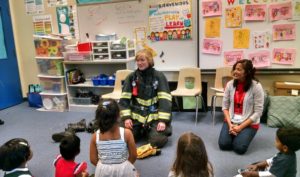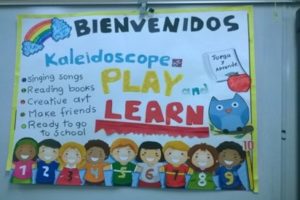 CISC (Chinese Information and Service Center) was started in Seattle in 1972 with the objective of helping non-English speaking elderly in the Chinese community. As the needs of the community grew, the organization responded by expanding its range of services to include children, youth, and adults. Its programs are wide and varied, offering ESL and naturalization classes, heath and cultural, as well as employment and technology programs.
CISC (Chinese Information and Service Center) was started in Seattle in 1972 with the objective of helping non-English speaking elderly in the Chinese community. As the needs of the community grew, the organization responded by expanding its range of services to include children, youth, and adults. Its programs are wide and varied, offering ESL and naturalization classes, heath and cultural, as well as employment and technology programs.
Dorothy Wong, the executive director of CISC, has had a long career serving nonprofit organizations in the area of health care and social services. She was earlier based in California, as executive director of the International Community Health Services, and moved to Seattle in 1993. Passionate about CISC and its mission to help the Chinese community, Ms. Wong speaks about the organization and being a partner with Eastside Pathways.
What is the role that CISC plays in the Chinese community?
The key is to understand the needs of the Chinese community. And the first and most important issue for them is how they can survive here. They come here for a better life or because they have family here, but they don’t want to be dependent.
We focus on the low-income population, on empowering them financially. The first thing we do is to get them stabilized and then give them the resources they need to survive and thrive in this country. We have different learning programs, classes, and services. A lot of this is focused on early prevention and early learning. We also have after-school programs and bilingual-bicultural programs.
The second area of concern for new immigrants is that they don’t want to lose their identity and their culture. The challenge is how to integrate the community where everyone understands the different cultures. Our children experience the American culture in schools and we want them to grow up learning that both are okay. Middle school is especially a difficult time for a lot of our kids. It’s the transition phase when the kids are trying to develop an identity and think for themselves – and that can be confusing. We have a youth after-school program that focuses on leadership development. We also have counseling services and family case managers to help them integrate.
What are some of the issues faced by CISC?
We are not a very big organization and one of the challenges is that there is no money for marketing and outreach. Most of our awareness comes through word of mouth, and we may not be reaching out to all in the community. The other challenge is that for most of our staff English is the second language and that has restricted us in terms of the growth that we could have had.
How has CISC benefited from being a partner with Eastside Pathways?
The most important benefit that I see is the opportunity to meet service providers on the Eastside. We are based in Seattle and Eastside Pathways helped us to get introduced to organizations on the Eastside. We have started working with some of them, exchanged information and also done some of our activities such as the Kaleidoscope program. Our program staff now regularly interacts with Eastside service providers.
The second benefit we see is that Eastside Pathways is trying to transform how to serve the changing population on the Eastside from a systematic perspective. They want to avoid duplicating what organizations are already doing to address the needs of the community. They are initiating conversations and coalescing efforts, which I like. It’s not easy to do that and I give them credit for taking it on. I feel that it is still in the developmental stage, but the fact that they have taken it on is important.
Are you familiar with the collective impact model that Eastside Pathways follows?
Yes, I work on Eastside Pathways’ Partner Leadership Committee and I’ve been to some of the All Partner Meetings, but some of that structure is a little confusing and I am still trying to grapple with it. People are drawn to the concept and model of collective impact, but the challenge is to move from the model to something that can be executed.
What I get from collective impact is of everybody coming together in a structured way for the greater good, for the collective good, and from that work collaboratively with one another.
What I see is that organizations on the Eastside are extending their services to Seattle that could be explored a little more. CISC is a small and tight organization and we don’t really have the resource to reach out to every community. So collaborating and working together would benefit the community.
Could you share with us your views about adaptive leadership?
The adaptive leadership model has a lot of promise, but implementing it could be a little more challenging than people think.
It can be emotionally difficult for some people, but if you had that kind of training and insight, it can really transform how you act with people and how you tap back into your potential as a human being. I did a very intensive training back in the 90s and it is transforming. It brings out your personal edge.
 CISC was awarded the Bill Henningsgaard Fund for Children 2015 Grant Award by Eastside Pathways. What has the award meant for CISC?
CISC was awarded the Bill Henningsgaard Fund for Children 2015 Grant Award by Eastside Pathways. What has the award meant for CISC?
We were happy to be awarded the 2015 grant. It helped us fund our Spanish Bilingual Kaleidoscope Play & Learn Group, which provides early learning support to low-income, limited English proficient (LEP), Spanish-speaking immigrant families and their children, who have limited access to early learning related activities and community resources. The children learn early math, literacy, and social skills through play method. The mothers and caregivers learn about child development, the importance of play and other parenting skills.
The families who participated enjoyed the activities that included storytelling, pretend play, crafts, and music. Many families have told us that their children had ‘gained confidence’ and ‘improved listening skills’ and as well ‘learned to play with other kids and better understand what it is to be part of a group.’
Interview with Dorothy Wong and Hueiling Chan by Sujata Agrawal, communications strategist and storyteller, and volunteer writer for Eastside Pathways

